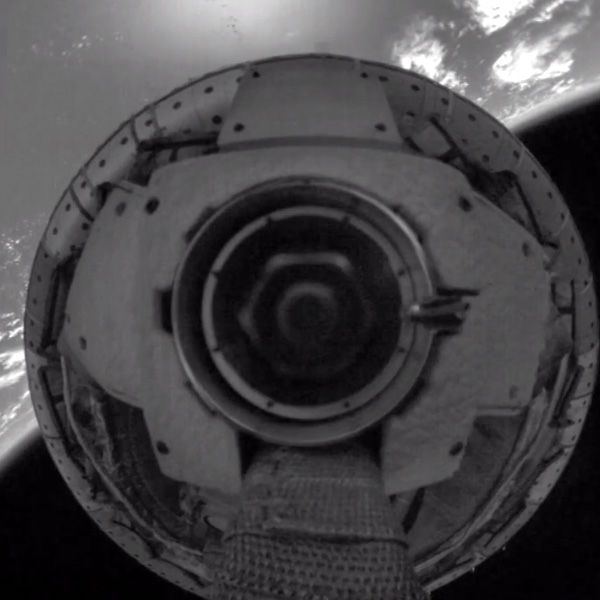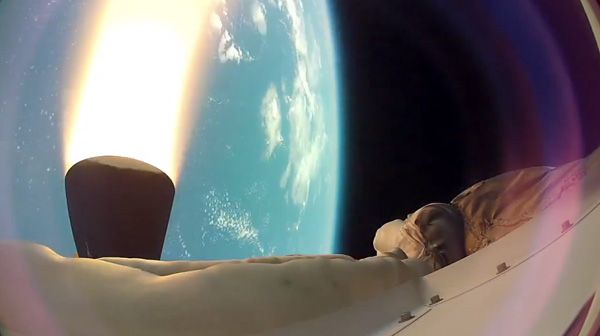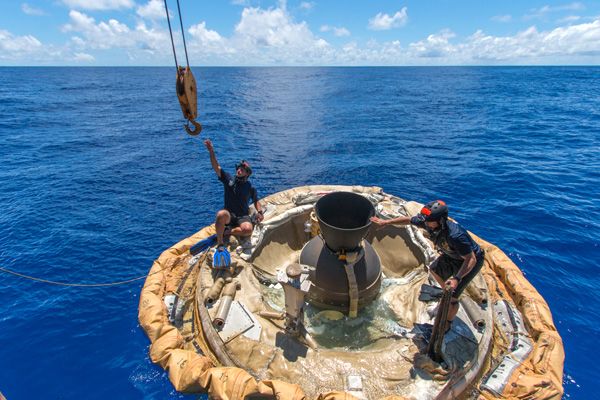
NASA / JPL - Caltech
Ride Shotgun With NASA Saucer As It Flies to Near Space (Press Release - August 8)
NASA's Low-Density Supersonic Decelerator (LDSD) project successfully flew a rocket-powered, saucer-shaped test vehicle into near-space in late June from the U.S. Navy's Pacific Missile Range Facility on Kauai, Hawaii. The goal of this experimental flight test, the first of three planned for the project, was to determine if the balloon-launched, rocket-powered, saucer-shaped, design could reach the altitudes and airspeeds needed to test two new breakthrough technologies destined for future Mars missions.
Carried as payload during the shakeout flight were two cutting-edge technologies scheduled to be tested next year aboard this same type of test vehicle. The Supersonic Inflatable Aerodynamic Decelerator (SIAD) is a large, doughnut-shaped air brake that deployed during the flight, helping slow the vehicle from 3.8 to 2 times the speed of sound. The second, the Supersonic Disksail Parachute, is the largest supersonic parachute ever flown. It has more than double the area of the parachute which was used for the Mars Science Laboratory (MSL) mission that carried the Curiosity rover to the surface of Mars.
"A good test is one where there are no surprises but a great test is one where you are able to learn new things, and that is certainly what we have in this case." said Ian Clark, principal investigator for LDSD at NASA's Jet Propulsion Laboratory in Pasadena, California. "Our test vehicle performed as advertised. The SIAD and ballute, which extracted the parachute, also performed beyond expectations. We also got significant insight into the fundamental physics of parachute inflation. We are literally re-writing the books on high-speed parachute operations, and we are doing it a year ahead of schedule."
Hitching a ride aboard the 7,000-pound saucer were several high-definition video cameras. The arresting imagery is providing the engineers and scientists on the LDSD project with never before seen insights into the dynamics involved with flying such a vehicle at high altitudes and Mach numbers.
"As far as I am concerned, whenever you get to ride shotgun on a rocket-powered flying saucer, it is a good day," said Clark. "We hope the video will show everyone how beautiful and awesome the test was, and to just to give folks an insight into what experimental flight test is all about."
The high-resolution images and video clips taken during the LDSD test flight are available at:
http://go.usa.gov/N5zm
The LDSD cross-cutting demonstration mission tested breakthrough technologies that will enable large payloads to be safely landed on the surface of Mars and allow access to more of the planet's surface by enabling landings at higher altitude sites.
NASA's Space Technology Mission Directorate funds the LDSD mission, a cooperative effort led by NASA's Jet Propulsion Laboratory in Pasadena, California. NASA's Technology Demonstration Mission program manages LDSD at NASA's Marshall Space Flight Center in Huntsville, Alabama. NASA's Wallops Flight Facility in Wallops Island, Virginia, coordinated support with the Pacific Missile Range Facility, provided the core electrical systems for the test vehicle, and coordinated the balloon and recovery services for the LDSD test.
Source: Jet Propulsion Laboratory
****

NASA / JPL - Caltech

NASA / JPL - Caltech

No comments:
Post a Comment